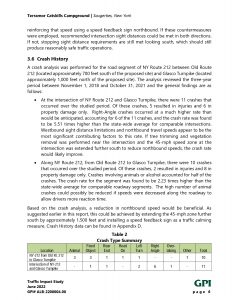Immediate neighbors of the Terramor property will notice increased activity on the property over the next couple of weeks.
As announced a while back, contractors for the developer will be testing three wells. Tests should start Friday September 16th and continue for up to three weeks. Neighbors may see heavy equipment moving and will hear generators.
There will be several steps to the testing:
- First, each well will undergo “step tests”. These tests may happen simultaneously at each of the three wells.
A step-drawdown test (or step test) is a single-well pumping test designed to investigate the performance of a pumping well under controlled variable discharge conditions. In a step-drawdown test, the discharge rate in the pumping well is increased from an initially low constant rate through a sequence of pumping intervals (steps) of progressively higher constant rates. Each step is typically of equal duration, lasting from approximately 30 minutes to 2 hours. Each step should be of sufficient duration to allow dissipation of wellbore storage effects. (From http://www.aqtesolv.com/pumping-tests/step-drawdown-tests.htm
Pressure in the well is also measured all during this process.
- Next, each well will be subjected to a “constant flow” test.
A control well is pumped at a constant rate and water-level response (drawdown) is measured in one or more surrounding observation wells and optionally in the control well itself. The goal of a constant-rate pumping test is to estimate hydraulic properties of an aquifer system such as transmissivity, hydraulic conductivity and storativity (storage coefficient). (From http://www.aqtesolv.com/pumping-tests/constant-rate-pump-tests.htm)
A constant flow test will last at least 24 hours, but should likely last longer than that to generate more accurate data.
- Finally, immediately after each of the constant flow tests at each individual well, samples of the water will be taken for analysis.
Readers may remember that Terramor has expressed a willingness to “test neighbor wells while we test ours”. We have contacted Terramor to find out about this and have been told that they are working on it (2022-09-24). At a minimum, it seems that these neighbor tests should include all wells withing 1000 feet of Terramor property lines, should include water quality sampling (for contaminants) and, most importantly, tests to see if neighbor wells react **during** Terramor’s constant flow tests. These tests would likely involve dropping a transducer down the neighbor’s well bore hole and taking pressure measurements at short, repeating intervals for the duration of the test. The most accurate data would be obtained by minimizing household water use for the duration of the test.
We will update this site as we get more details of how neighbors might participate in testing.
As always. please advise errors or omissions.





